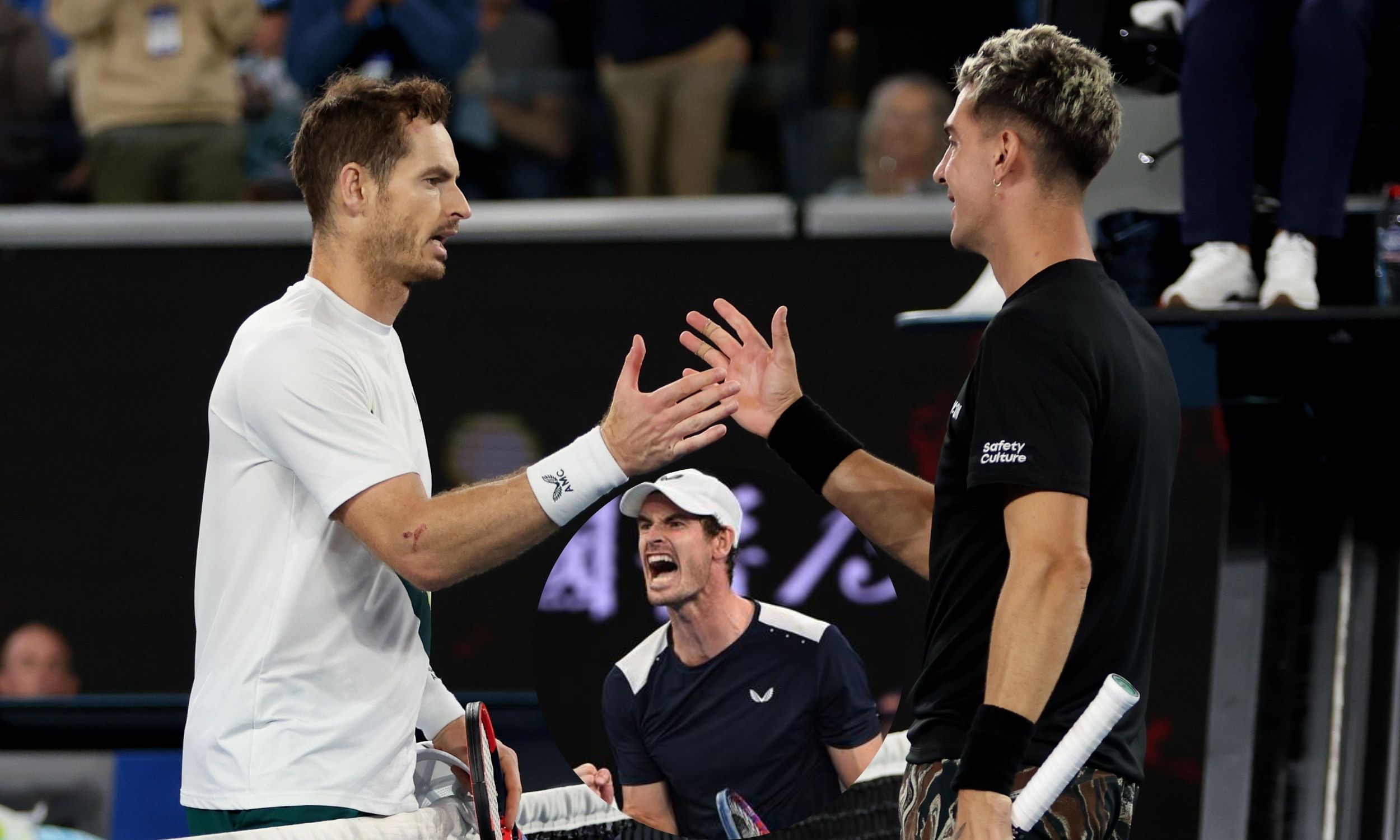At 4:05 a.m. in Melbourne, Andy Murray delivered a decisive backhand winner past Thanasi Kokkinakis, finally concluding a grueling match that had started nearly six hours earlier.
Murray, a three-time Grand Slam champion and former world No. 1, came from two sets down to secure victory, showcasing the resilience and determination that have characterized his career.

Kokkinakis also deserves commendation for his relentless effort into the early hours of Thursday morning, despite the majority of Australians having long gone to bed.
However, the late finish raised concerns about why the match was still ongoing past 4 a.m. Murray himself expressed frustration, particularly about being denied a bathroom break after having already used one earlier in the match.
“It’s so disrespectful that the tournament has us out here until three, f***ing four in the morning and we’re not allowed to take a piss,” he fumed.
Murray’s brother, Jamie, echoed his frustration on social media, criticizing the scheduling: “We can’t continue to have players compete into the wee hours of the morning. Rubbish for everyone involved – players/fans/event staff.”
The Australian Open’s demanding schedule involves five matches daily on the main courts – three during the day and two at night. Murray vs. Kokkinakis marked the second-latest finish in the tournament’s history.
The record is held by Lleyton Hewitt’s 2008 victory over Marcos Baghdatis, which ended at 4:33 a.m. after an earlier long match involving Roger Federer.
While these late finishes cater to international audiences in Europe and North America, they pose serious challenges for those involved.
“I really think this is a nightmare for tennis,” says Simon Cambers, tennis writer and co-author of The Roger Federer Effect.
“The players are severely affected, and their chances of advancing are slim. However, staff, officials, and media also suffer from the demanding hours.”
CNN reached out to Tennis Australia for comment on the scheduling issues but did not receive an immediate response. Tennis Australia chief Craig Tiley defended the current schedule, emphasizing the need to protect matches and maintain a full lineup for fans and broadcasters.
“At this point, there is no need to alter the schedule. We review it every year, and we have had long matches before,” Tiley explained. Cambers suggests considering a reduction in match length to best-of-three sets in the early rounds, reverting to best-of-five from the fourth round onwards.
He also proposes speeding up court conditions to shorten match duration. “It’s been done before in the 1970s,” he notes, “and it might extend players’ careers by reducing physical strain.” Murray, who also needed five sets to defeat Matteo Berrettini in the first round, will face Roberto Bautista Agut in the night session on Saturday.
Both players, having recently played long matches, will be eager for quicker victories. However, their previous encounter in Melbourne saw Bautista Agut win in five sets over four hours, hinting that another marathon may be on the horizon at the Australian Open.
































Leave a Reply